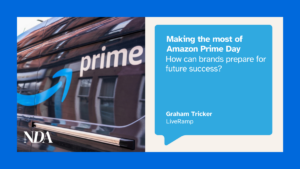By Maren Seitz, Senior Director, Analytic Partners
How do you think the retail media landscape has changed/is changing?
Retail media shows signs of catching up with a lot of other media channels and for some brands and industries it now even overperforms compared to standard display or search. Brands are increasingly investing in retail media, and it is predicted that digital retail spend globally will almost double from $77bn in 2021 to $143bn in 2024. It’s the perfect time for brands to start testing and experimenting so they can explore the true value of retail media.
How can marketers effectively incorporate retail media into their 2023 strategy?
Like all strategies, the key is to not blindly follow a trend, but define a clear role and objective for any marketing activity. Retail media is an interesting opportunity if integrated thoughtfully into a broader strategy. Is the goal to drive short-term sales, or longer-term impacts? If retail media is used to target those close to purchase, which other activities will secure future potential buyers?
Focusing solely on one channel is never going to be efficient or effective. Usually, we see that more is more! We are seeing strong synergies when integrating multiple channels with each other, and retail media will be no exception. Once advertisers have taken the leap and allocated funds, it will be important to measure retail media’s impact holistically with all business drivers and optimise over time. As with any growing activity, it will be especially important to keep an eye on how this space develops. Oversaturation may impact the shopper experience, leading to annoyed shoppers and declining effectiveness and efficiency over time.
And can you talk us through any particular companies who are doing this well already?
As a Retail Media Network, Amazon has become known as one of the pioneers of retail media – and it continues to innovate in this area. It has found effective ways for how “Products related to this item” are displayed and encourages consumers to further fill their shopping carts with a click of a button. Other offers are embedded in newsletters or e-mail purchase receipts in order to entice customers to return to the platform and buy more. The brand generated $31.2 billion in revenue in 2021 and dominates over other global retailers.
Microsoft has recently announced its retail media offering in competition with Amazon, and along with more well-known brands such as Tesco’s moving to become a retail media network is a strong sign of the channel’s growth, and other brands will soon be following suit.
Why do you think retail media has become such a key part of a marketer’s toolkit?
The brands and retailers that adopt the right retail media strategy can tap into three notable trends in the retail and marketing industry:
- Retailers’ first-party data can address the void left by the disappearance of third-party cookies – so advertisers can continue targeting the right customer, in the right place, at the right time.
- The gradual downward trend in linear TV usage has marketers looking for additional and alternative options to reach a large number of consumers.
- The strong momentum of e-commerce and its expected continued growth motivate marketers to look for ways to drive sales, and retailers to seek ways to monetize their growing shopper base.
How can marketers measure success in this space?
To ensure advertisers can accurately assign impact and efficiency to retail media activities, it is key to measure holistically – such as using commercial analytics. This means creating a unified view in terms of sales – but also in regards to the broader marketing mix.
Sales on the retailer’s website or app should be analysed with the following questions: What is driving sales on the retailer’s site (including TV spots, sponsoring, weather, etc.) and how can it be further driven in an efficient way? With on-site advertising: How effective and efficient is retail media itself in driving sales on the website or app and off it? How should it be best employed as part of the full media mix?
Measuring success in this space can be tricky, as sufficiently granular data can usually only be obtained directly from the retailer. This is where data partnerships with key retailers are key for measurement providers.









